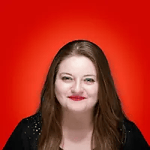August 27, 2019
 by Rebecca Reynoso / August 27, 2019
by Rebecca Reynoso / August 27, 2019

By now, we know that AI is a fast-scaling sector.
It’s scaling so fast, in fact, that the job market for artificial intelligence-centered roles is expanding rapidly. So it’s no surprise that the demand for people with a background in artificial intelligence is high. But even if you fit the bill of AI expert, you might not know what the most in-demand jobs are in your field.
Fortunately, we’ve outlined seven core jobs in the AI sector that are hiring today. Let’s find out which one is right for you.
Before taking a deeper dive into the types of jobs you can land with experience in AI, make sure to overview the full history of artificial intelligence to refresh your knowledge.
Now, let's find out about the top seven jobs you can get in the AI field along with the education requirements, experience necessary, projected salary, and other relevant tidbits in each role.
Note: Any salaries listed are accurate at the time of writing. However, salaries fluctuate based on time of posting, job location, individual skill set, education, and experience.
A business intelligence (BI) developer works with different types of software and databases. Business intelligence encompasses large-scale, enterprise-level data analytics, which includes historical, current, and predictive business operations decisions.
A BI developer’s role includes coding, developing tools, fine-tuning processes and tools, debugging, researching, and finding solutions for problems. The role requires an understanding of data mining, relational and multidimensional databases, designing, testing, and analyzing data architecture, and aggregating results from their findings. Other tasks include writing reports and technical documents for processes.
A BI developer must have a Bachelor’s Degree in Computer Science/Engineering with a concentration in Software Development. Graduate degrees in a related field may also be necessary.
According to Glassdoor, the average base salary for a business intelligence developer in the United States is approximately $90,000.
A chatbot developer is a software developer who specializes in creating chatbots from the bottom up. A role like this requires the ideal candidate to know how to code in multiple languages, have a good grasp of what artificial intelligence is, and know how to create a chatbot from scratch rather than using a program with pre-made settings as a springboard for chatbot creation.
A chatbot developer’s role includes a strong understanding of natural language processing (NLP), relational databases, linguistics, semantic design, an array of coding languages (as per specific role requirements), serverless application development, and more. These requirements vary heavily depending on the company, the type of chatbot(s) being developed, and the business purpose of the chatbot(s).
Chatbot developers can come from various levels of academic experience. Some roles require a Bachelor’s Degree in Computer Science while others require a Master’s Degree. Some roles only require that candidates know how to code in various languages (e.g. C#, Java, Python, Node.js, JavaScript, etc.) and have proven experience developing functional web applications and programs.
According to Glassdoor, the average base salary for a chatbot developer/engineer in the United States is approximately $80,000. Go over our chatbot statistics roundup to learn just how valuable a job as a chatbot developer/engineer truly is.
A computer vision engineer develops computer vision technologies and solutions by designing and implementing algorithms. Computer vision encompasses how computers can understand digital images and videos, and the purpose of the field is to automate computer systems to do what the human visual system does (i.e. see, consume, and understand what we are viewing).
Computer vision engineers contain hybrid knowledge of machine learning, computer vision, and programming languages. This role is development-based as well as creative and covers the fields of engineering as well as digital media. Computer vision engineers must also understand the concepts of multiview geometry, bundle adjustment, SLAM (simultaneous localization and mapping) among other things.
Computer vision engineers can have either a Bachelor’s, Master’s, or PhD in Computer Science or a related quantitative field. The higher the degree, the higher the salary.
According to Glassdoor, the average base salary for a computer vision engineer in the United States is approximately $87,000.
A data scientist analyzes, visualizes, and models large amounts of data, i.e. big data. By using machine learning models, a data scientist helps make timely business decisions based on large-scale data analysis. Data scientists are a combination of scientist, data analyst, programmer, and statistician.
This role requires a high level of problem-solving skills, how to manipulate large, complex datasets as well as understanding how to predict future outcomes based on data analysis. Data scientists need to build predictive models in order to make tested, accurate business decisions.
A data scientist likely needs a Master’s Degree or PhD in Statistics, Applied Mathematics, Computer Science, or another quantitative field. Whichever degree the applicant holds, they must have experience with statistical modeling and a good understanding of machine learning techniques and technologies for making smarter business decisions.
According to Glassdoor, the average base salary for a data scientist in the United States is approximately $117,000.
A machine learning (ML) engineer is a software engineer who specializes in building machine learning applications, data pipelines, and API integrations. ML engineers need to understand how to code, what NLP is, have a strong grasp of data analytics, and be able to analyze problems, propose solutions, and project likelihoods and outcomes for future problems they might face. This falls under predictive analytics, which is a facet of machine learning as a whole.
ML engineers should be experienced in statistical models, know how algorithms work, understand what deep learning is and its connection to machine learning, be familiar with object-oriented programming, and know how to develop programs and applications.
A machine learning engineer must have a Bachelor’s Degree in Computer Science. Most ML engineers also have a Master’s or PhD in Machine Learning. Some jobs allow applicants to apply with a Bachelor’s Degree plus a certification in machine learning and artificial intelligence, like the program offered at MIT.
According to Glassdoor, the average base salary for a machine learning engineer in the United States is approximately $121,000.
Want to hone your machine learning skills before applying to the job of your dreams? Find out what machine learning software currently exists and learn how to use it. See rankings from easiest-to-use, best, and highest rated options.
A research scientist specializes in several applications of AI: applied mathematics, machine learning, deep learning, reinforcement learning, computational statistics, and NLP, to name a few. It’s important to note that research scientists can find work in a variety of disciplines, like medicine or education.
A research scientist must understand APIs, computing and data services (e.g. SQL/NoSQL, Blockchain, Spark), know about cloud platforms, modeling, and computing, containers, and more.
Most research scientist roles require at minimum a Master’s Degree in Engineering, Computer Science, or Physics, although many require a PhD. Some allow a minimum of a Bachelor’s Degree in any of the aforementioned fields.
According to Glassdoor, the average base salary for a research scientist in the United States is approximately $83,500.
A research and development engineer is closely related to a machine learning engineer. This role requires knowledge in text and sentiment classification, anomaly detection, fraud detection, and more. A R&D engineer will develop system architecture, then test, maintain, and modify existing systems.
R&D engineers can fall within the realm of electrical, mechanical, or material engineering and may focus on one of those areas. R&D engineers also oversee the development and production of tools and systems in addition to the hands-on development process.
Many R&D engineer roles require candidates to hold a Master’s Degree in Engineering (e.g. mechanical, electrical, material), Computer Science, Mathematics, or one of the hard sciences (e.g. biology or physics). Some roles allow a minimum of a Bachelor’s Degree in one of the above as long as the candidate has anywhere from 5+ years of experience in the field.
According to Glassdoor, the average base salary for a research and development engineer in the United States is approximately $85,000.
If you’re currently in the process of completing your degree in computer science, looking to change jobs, or simply learning AI before taking the plunge into a completely new and exciting career path, make sure you brush up on the basics of AI.
Then, each yourself about the various types of artificial intelligence software and companies currently leading the way in AI innovations. Who knows, you might find your future employer with a few clicks of your mouse!
Rebecca Reynoso is the former Sr. Editor and Guest Post Program Manager at G2. She holds two degrees in English, a BA from the University of Illinois-Chicago and an MA from DePaul University. Prior to working in tech, Rebecca taught English composition at a few colleges and universities in Chicago. Outside of G2, Rebecca freelance edits sales blogs and writes tech content. She has been editing professionally since 2013 and is a member of the American Copy Editors Society (ACES).
Looking to get into the field of hospitality?
 by Maddie Rehayem
by Maddie Rehayem
Cybercrime is on the rise, and it’s your job to protect us.
 by Mara Calvello
by Mara Calvello
College isn’t for everyone.
 by Derek Doeing
by Derek Doeing
Looking to get into the field of hospitality?
 by Maddie Rehayem
by Maddie Rehayem
Cybercrime is on the rise, and it’s your job to protect us.
 by Mara Calvello
by Mara Calvello


